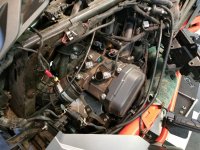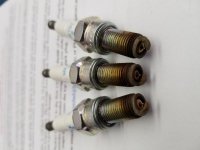BryanSD
Member
....Sir I'm not dissing you - however you are mis-taken on this ...... the " best chance " ( really ONLY chance ) on NOT getting Ethyl in your gas is using the gas from a pump labeled " NON-ETHYL GAS " ...The GRADE of gas has absolutely NOTHING to do with Alcohol content ........ not JMHO ...... Mike :thumbup:
Mike, I understand the difference between octane ratings and alcohol content. But as JFD mentioned in his post, IN PRACTICE for those of us that live in the corn states you'll almost NEVER find non-ethyl gas in the lower/mid grades as every pump is required by mandates to carry blended gas/ethanol. Yes, premium gas can contain ethanol (so you're not wrong here)...but many of the premium pumps are non-ethyl in my neck of the woods. Thus why I stated that if I want "pure gas" my only option is Premium (except when it it). The worst label is "may contain up to XX% Ethanol" which tells the consumer nothing.



